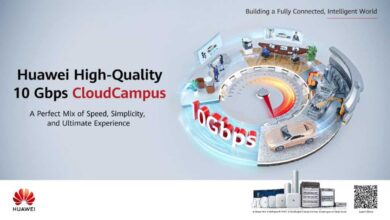Optimize your cloud costs for Microsoft workloads in uncertain times

IT and business decision makers are looking for cost savings wherever they can amid uncertain economic times. Amazon Web Services’ (AWS) unique hardware capabilities and cloud architecture, along with our flexible approach to managing Microsoft technology, offer significant opportunities to optimize costs.
Many customers run their Microsoft workloads on AWS because AWS offers exceptional performance and reliability and greater flexibility, while helping reduce infrastructure and licensing costs through resource optimization.
In this blog post, I discuss three ways you can reduce the cost of running your Microsoft workloads on AWS:
- Achieve better price-performance with AWS Nitro System and AWS Graviton processors.
- Move to a modern architecture to speed up innovation and reduce costs.
- Only pay for the infrastructure you truly need.
Achieve better price-performance with AWS Nitro System and AWS Graviton processors
AWS delivers exceptional value for Microsoft workloads in the cloud through hardware innovation, including the AWS Nitro System and AWS Graviton processors, offering unrivaled price-performance.
AWS Nitro System
Back in 2018, we started imagining what an AWS-built server might look like and how we could simplify performance and security. AWS had already started to work on offloading processing to dedicated hardware, but a number of server-related operations—including management, security, and monitoring—were still performed within the hypervisor, consuming CPU cycles that could otherwise be made available to customer workloads, as shown in Figure 1.
Figure 1. Traditional software-based hypervisors
In 2018, AWS introduced Nitro-enabled Amazon Elastic Compute Cloud (Amazon EC2) instances to customers. This AWS innovation was designed to uniquely help customers increase instance security while delivering performance that is indistinguishable from bare metal.
With the AWS Nitro System, as shown in Figure 2, we isolate the operational functions, offload them to dedicated hardware and software, and reduce costs by delivering practically all the resources of a server to your instances. As a result, we have reimagined a new, lightweight Nitro Hypervisor that has been intentionally minimized and purpose-built with the capabilities needed to perform its assigned functions—and no more.

Figure 2. Security and performance benefits of AWS Nitro System
The AWS Nitro System uses zero host processor resources to support the management, security and monitoring functions, meaning that almost 100% of the CPU cycles you pay for go to running your applications. Additionally, all I/O is taken care of by dedicated, bespoke hardware. This lets you realize improved performance for networking, I/O to local disks, and Amazon Elastic Block Store (Amazon EBS) network-attached storage—without placing any additional load on the hypervisor or reducing the performance of your applications. Importantly, the Nitro Card for EBS also offloads Amazon EBS encryption, meaning the encryption and decryption of data at rest is handled in dedicated hardware that doesn’t consume any resources on your host.
When you scale these capabilities across your Microsoft workloads, you can reap significant price-performance improvements and cost savings. Research from Principled Technologies has found that SQL Server workloads running on Nitro configurations delivered 68% better price-performance compared to similarly specified virtual machines provided by another cloud provider.
By removing these workloads from the Amazon EC2 host hardware and offloading it to dedicated Nitro hardware, AWS has been able to drastically reduce the size and complexity of the Nitro hypervisor, resulting in an extremely lightweight hypervisor that remains in the background. Importantly, you save costs by not having background tasks running and consuming resources when you do not need the hypervisor.
AWS Graviton processors
AWS Graviton processors deliver the best price-performance for your cloud workloads running on Amazon EC2.
AWS has been innovating with Graviton processors since 2018. AWS Graviton2 processors provide a 40% price-performance benefit over alternative comparable X86-based processors. And the latest processors in the AWS Graviton family, AWS Graviton3, provide up to 25% better compute performance compared to AWS Graviton2 processors.
These hardware innovations help improve security and performance while reducing running costs. Research from Principled Technologies has found that AWS delivers 62% lower price-performance compared to equivalent instances from the next largest cloud provider.
Move to a modern architecture to speed up innovation and reduce costs
Ultimately, modernization means moving from technologies designed for on-premises IT infrastructure to technology designed for the cloud. Technology built specifically for the cloud can help you speed up innovation and reduce your costs by removing the need for licensed commercial software.
To address business needs decades ago, many organizations chose to use a relational database, such as SQL Server. But their business needs have since evolved.
For example, perhaps you offer an online shopping experience and want to use a decision engine like the one on Amazon.com, which recommends products to your customers based on their purchase history and purchasing patterns of other customers who have made similar purchases.
Because of the complexity of the data relationships and the type of analysis required to make these product recommendations, a graph database like Amazon Neptune may be more cost-effective and deliver better performance than a traditional relational database like SQL Server.
With AWS, you can choose the technology that best meets your needs to deliver a great experience for your customers. This could be a database, operating system, a fully managed container solution, and more. AWS designs services for your specific business needs and doesn’t force you to figure out how to make them work to meet those needs.
Some technology providers often bundle tools together, giving you “four tools for the price of three”—even if you have no use for the fourth tool. AWS focuses on helping organizations only pay for what they need and regularly explores opportunities to optimize and further reduce costs without compromising quality.
With AWS, you should only pay for what you need.
Another example is Amazon Aurora, which gives you the performance and availability of a commercial-grade database at one-tenth the cost. Amazon Aurora is a fully managed service; you don’t have to worry about the undifferentiated heavy lifting of installing, patching, and other administrative tasks.
By streamlining your cloud portfolio and giving you the right cloud-built services for the right task, AWS helps you optimize costs while modernizing your technology architecture.
Only pay for the infrastructure you truly need
Shifting to the cloud also offers you an opportunity to license differently than in an on-premises world.
One way to license differently is to get an AWS Optimization and Licensing Assessment (OLA) to help you assess and optimize your current on-premises and cloud environments. These assessments are based on actual resource utilization, third-party licensing, and application dependencies. Indeed, research from the Enterprise Strategy Group has found that customers that use OLAs can reduce Windows Server licensing costs by 70% and SQL Server licensing costs by 45%.
Another way to license differently is to pay for Microsoft licensing through AWS as capacity is required. AWS bills Amazon EC2 usage in one-second increments, with a minimum of 60 seconds. For example, if you only need to run a workload for 90 seconds, then you only pay for 90 seconds. Instead of thinking three years ahead, you can think three seconds ahead and let AWS worry about the provisioning of both hardware and software for you.
Here’s another example: You may determine that out of the 168 hours in a week, you only need to run your cloud infrastructure at full capacity for 40 working hours, then at a limited capacity the other 128 hours.
It doesn’t pay to run your cloud resources at full capacity all the time. Yet, customers often do so when they are running on-premises infrastructure. AWS helps you automate your infrastructure so that it shuts down or reduces capacity during off-peak hours of operation.
You can also realize significant savings from a licensing perspective by doing so. With license-included Amazon EC2 and Amazon RDS instances, you not only stop paying for infrastructure when you shut it down, you also stop paying for the bundled software licensing. Moving away from a mindset of having to run infrastructure at full capacity 24/7 may be a change for some organizations, but it can allow you to optimize your costs.
Throttling infrastructure capacity when it’s not required is another great way to reduce costs. For example, imagine a typical CRM application. During core business hours, your customer support teams are generating a heavy load on the application that reduces at the end of the day. Then, at midnight, your daily batch processing begins, pushing utilization up again for the next three hours.
In this example, with a traditional, on-premises environment, you would need to purchase sufficient hardware and software licenses to cater for your peak loads, even though the application is only needed for 11 hours per workday.
Let’s compare that to the same application running on AWS. You do some analysis and determine that you require seven Amazon EC2 instances to support peak demand, but you only require two servers to keep the lights on during off-peak times. Using AWS Autoscaling Groups, you can quickly and easily set up your application to have access to all seven Amazon EC2 servers during times of peak load and wind capacity back down to two servers during off-peak time—while retaining the ability to scale back up to the full capacity of seven servers whenever it’s required. The bonus is that you can fully automate this process—based on schedule, real-time load, or predicted load—giving you the ability to continually optimize your infrastructure and licensing costs without incurring any operational overhead.
This AWS approach may cause you to think about changing the way you are licensing your Microsoft operating systems and databases.
Traditional software vendors license software 24/7/365. However, at AWS, we don’t think you should be paying for licenses on a 24/7/365 basis when you don’t need to. For flexible capacity, you could choose a hybrid licensing model. Let’s look at the previous example.
If you need to have capacity 24/7 on those two servers, you can use the Bring Your Own License approach for a workload like SQL Server. You would then simply pay by the minute or the hour for the additional five servers with flexible capacity needs. In this hybrid model, you don’t need to throw your SQL Server licenses away, but instead, you can focus on optimizing your resource utilization on AWS.
You could also consider Savings Plans, a flexible pricing model that can help you reduce your bill by up to 72% compared to on-demand prices, in exchange for a one- or three-year hourly spend commitment. AWS also offers Amazon EC2 Reserved Instances, which provide you with a similar savings compared to on-demand prices and a capacity reservation when used in a specific Availability Zone.
Optimize your costs across multiple dimensions
At AWS, we understand that economic uncertainty often means having to confront tough choices for your organization. There’s no better time to explore cost-saving opportunities with AWS.
AWS’ foundational technology infrastructure helps you reduce your costs and improve price-performance. We also offer cloud-built services that can speed up innovation and reduce your costs by removing the need for licensed commercial software. And AWS works with you to ensure you only pay for the infrastructure you really need. Start your cost-savings journey by taking advantage of a complimentary AWS Optimization and Licensing Assessment. Click here to sign up so the AWS OLA team can help you.
AWS can help you assess how your company can get the most out of cloud. Join the millions of AWS customers that trust us to migrate and modernize their most important applications in the cloud. To learn more on modernizing Windows Server or SQL Server, visit Windows on AWS. Contact us to start your migration journey today.



